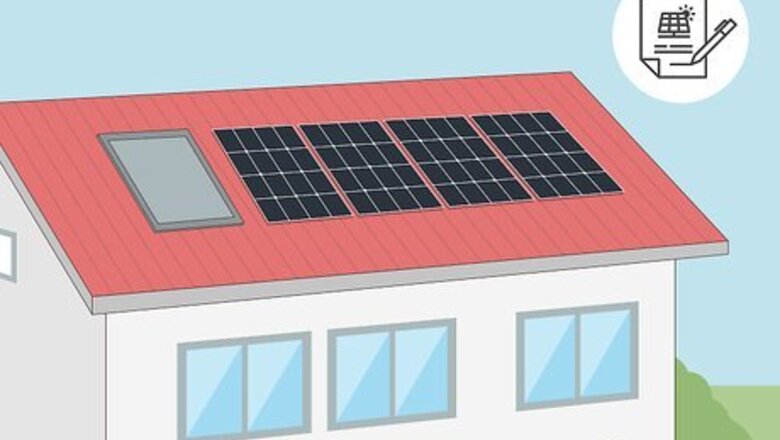
views
X
Trustworthy Source
U.S. Department of Energy
Official site for the U.S. Department of Energy, which provides resources related to energy safety, conservation, and efficiency
Go to source
After installation, proper management and upkeep help ensure your panels continue to perform as efficiently as possible for many years to come.
Lease a system rather than buying it outright.
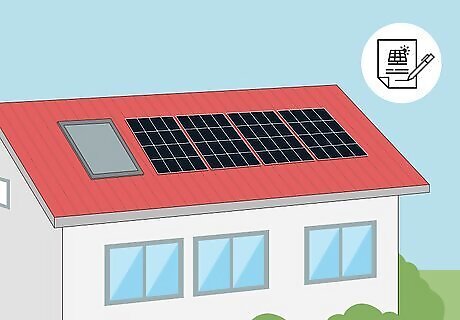
If you lease a system, the solar company is responsible for its upkeep. While you can buy a solar system outright, that would mean you were in charge of the maintenance and upkeep. If you're not familiar with solar power systems, you'll probably get more out of the system if you let the solar company handle the upkeep. Leasing can also be more cost-efficient since many solar companies will lease systems with no money down. If you decide to lease your system, ask the company what your options are if you sell your home. Many leases are for 5 years or more, so you want to be prepared.
Use panels with grade A monocrystalline cells.
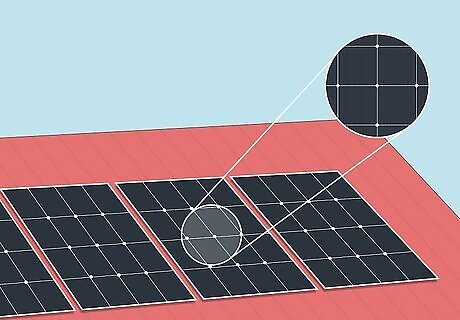
Monocrystalline solar panels have the highest efficiency. In the world of solar energy systems, the quality of your photovoltaic cells is the biggest predictor of solar panel efficiency. Whether buying or leasing, don't scrimp on the quality if efficiency is important to you. Panels with lower-grade cells might be less expensive to purchase, but they'll be less efficient and produce less energy. This means that in real terms, they'll cost you more to operate than panels with high-quality cells.
Invest in anti-reflection coatings to increase cell efficiency.
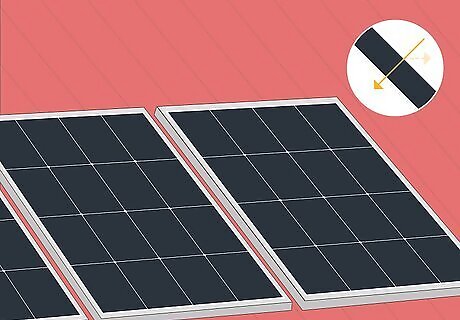
Anti-reflection coatings allow cells to absorb more rays. Without anti-reflection coatings, more than 30% of the light that reaches your panels isn't absorbed and converted into energy. The photovoltaic cells in high-quality solar panels have anti-reflection coatings to prevent the loss of light from reflection. These coatings ensure that your panels absorb as much of the sun's rays as possible. Cells with a textured surface also have anti-reflective properties. When you're shopping for solar panels, ask what steps have been taken to control reflection.
Hire a certified solar installer.
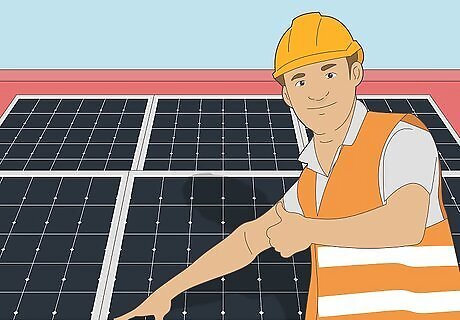
A professional installer will ensure peak efficiency. In the US and Canada, look for installers certified by the North American Board of Certified Energy Practitioners (NABCEP). Beyond certification, make sure any installer you hire has all the licenses and insurance required where you live. Check into any installer's background to make sure they have experience and a positive reputation in the solar energy community.
Orient solar panels for maximum exposure.
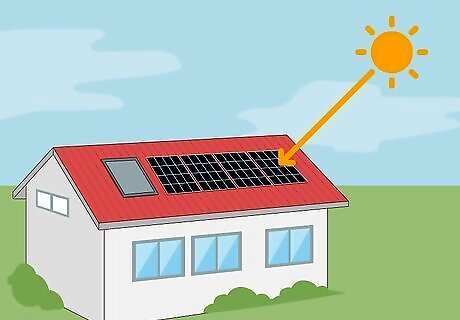
In the northern hemisphere, orient your panels facing geographic south. If you live in the southern hemisphere, on the other hand, have your panels face north. These directions are different from the directions you might find with a compass, which points you toward the magnetic poles, not the geographic poles. Your panels' orientation also depends on how you're using your solar energy. For example, if you're powering your home with solar, you'll get more value from energy collected later in the day. In the northern hemisphere, this might mean turning your panels slightly southwest. If you can't have your solar panels facing south (or north in the southern hemisphere), face them west, since that's the direction the sun sets. If those aren't an option, orient them east, or north (or south in the southern hemisphere) if that's your only option.
Calculate the best angle for your latitude.
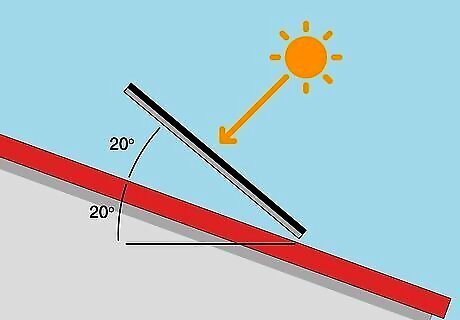
An angle equal to your geographic latitude ensures maximum efficiency. The closer your panels are to the equator, the more they should be pointed straight up. Your geographic latitude provides the angle at which your panels will get the most direct sunlight over the course of the year. For example, if you live in Boulder, Colorado, which is at 40º N latitude, your panels would be most efficient if you set them facing geographic south at a 40º angle. If you're putting your solar panels on a sloped roof, you'd include that angle as well. For example, if your roof had a 20º slope and you needed your panels to be at a 40º angle, you would put them at a 20º angle on your roof.
Set up your panels to track the sun.
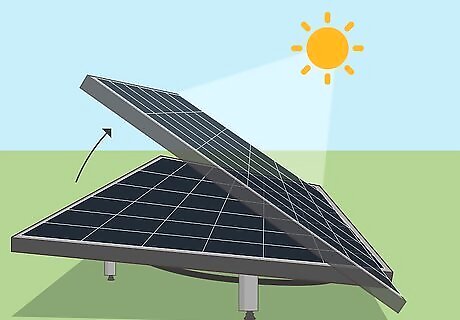
Tracking the sun allows your panels to absorb maximum energy. If you have a ground-mounted solar array, trackers allow your panels to follow the sun so they absorb the most rays. These systems are most common in commercial solar farms, but there are smaller trackers that allow your panels to arc from east to west, following the sun from when it rises to when it sets. This can be a very expensive system, but the increased efficiency can be worth the initial cost, especially if you live in an area that doesn't get extensive direct sunlight.
Cut back trees that shade your panels.
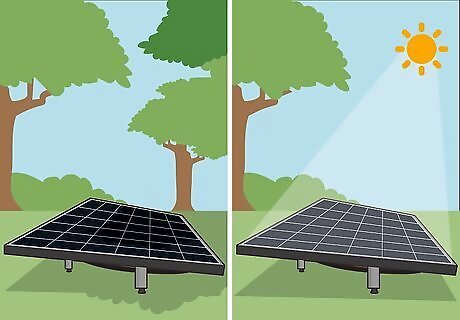
Panels are most efficient if they get direct sunlight. Observe your panels throughout the day and see if there are any nearby trees that shade them. During that time, shaded cells aren't absorbing any light. This is something you'll probably have to do periodically, especially if you live near a wooded area. Pay attention to the growth so you can schedule trimmings. If the trees aren't on your land, coordinate with the landowner and discuss the issue. They might be willing to work on the trees in exchange for some power.
Reduce the number of devices using solar power at a time.
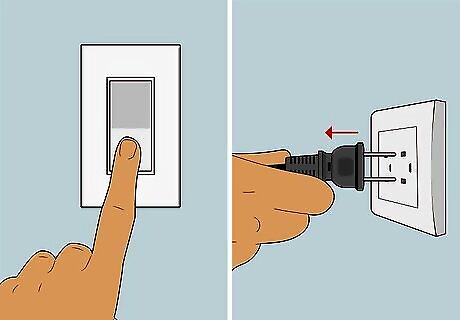
Using less power puts less of a drain on your batteries. Generally, if you're not running on full power, you can use your stored energy for a longer period. It's also more cost-effective to use less power for several hours, as opposed to using maximum power for a shorter period. For example, don't run the clothes washer and the dishwasher at the same time. You might also turn off lights in rooms that you're not using, or unplug electronics when they're not in use.
Install backup batteries to store solar energy.
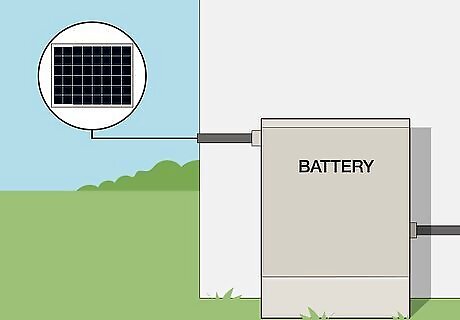
Put your panels and storage near each other to reduce costs. Any energy that you're not able to store will be lost, which can kill your panels' efficiency. Lithium-ion battery storage systems store the energy absorbed by your panels so you can use it even when the sun isn't out. Solar panel installation is an expensive and time-consuming process. You'll maximize the efficiency of your panels if you set up backup batteries at the same time you get your panels installed.
Clean your solar panels once or twice a year.

Wash your panels with water and a non-abrasive sponge. This will get off the bulk of the dust and debris that's blocking your solar panels so they'll perform their best. Avoid pressure-washers, which can damage the surface of the cells. If there's stuck-on grime and you need a little extra help to get it off, add a drop of dish detergent to your water. If you have an extremely sloped roof, cleaning your panels yourself can be dangerous. Ask your installer to recommend a cleaner—they probably know some good local companies (they might even clean panels themselves).

















Comments
0 comment